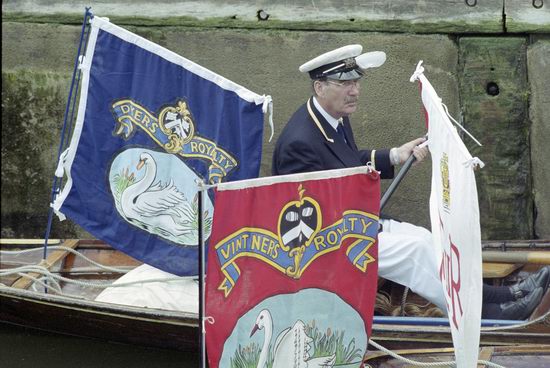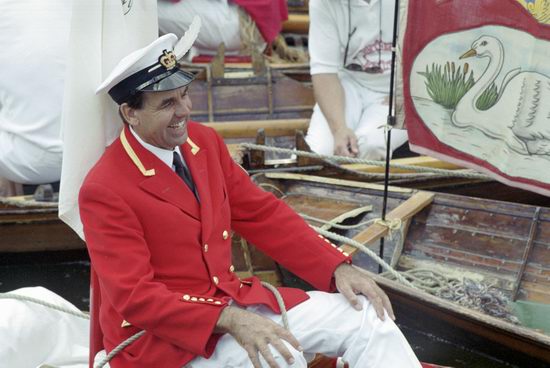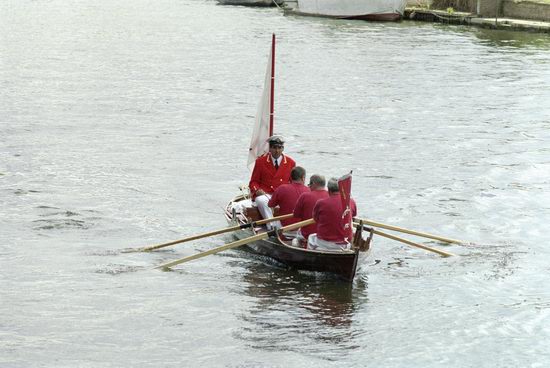|
Swan Upping |
||
 |
The Queen's Swanmaster (an office that dates from 1295), together with his colleagues from both the Dyers and the Vintners, and a number of watermen to assist, still makes an annual journey upstream from Sunbury to Abingdon. It is now a colourful pageant - the Crown team in scarlet, the Dyers in navy blue and the Vintners in black and white, their skiffs (or randans) flying bright flags that makes its way upriver. Its a kind of mobile clinic, stopping to weigh, measure and give a quick health check to this year's new brood of cygnets as well as calling in to some of the older riverside pubs - such as 'The Swan' at Staines. | |
| Swan Master for the Dyers company | ||
 |
Records of the swans were kept scrupulously on the 'swan rolls' for hundreds of years and are now maintained for the Thames by David Barber, who took over the job of Swan Master a few years ago, having always worked on the river and taken part as a swan upper for many years. He is accompanied by the Queen's Swan Warden, the Professor of Ornithology at the University of Oxford's Department of Zoology, Professor Christopher Perrins. The birds are now ringed on the leg with individual identification numbers rather than marked on the bill. | |
| Queen's Swan Master, David Barber, relaxes while his randan is in the lock | ||
 |
The Swan Master issues an annual report - a recent census reported 132 cygnets on the river, but a total of around 1,000 to 1,200 adult swans. Most of these birds live in large non-breeding flocks and although they can live for 25 years or more, typically die much younger and the average life-span is around seven years. When paired up, swans are very territorial and will chase off other swans from their patch. Swans seldom breed before they are three years old, and although most form long partnerships, there are others who break up and find new mates. | |
| Carrying
an adult swan - they weight around 10kg. more pictures |
||